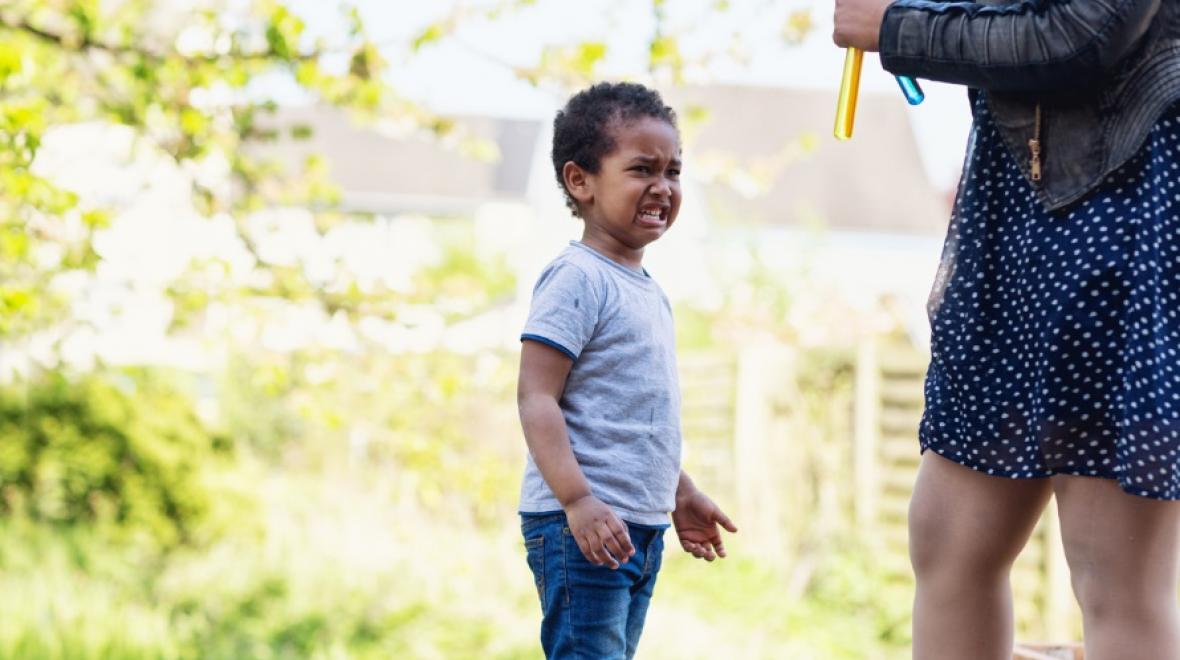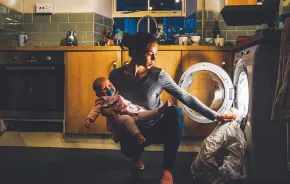
Editor's note: This article was sponsored by Bright Horizons
The green plate is missing.
Two-year-old Jake wants the green plate now. He’ll settle for the red plate that Sarah is gripping with every muscle in her 4-year-old body.
The screaming begins, followed by tears. Is this when a parent needs to marshal their empathy? Right when they’re wondering why they should care who gets what plate for lunch?
“Empathy only works if it’s authentic. Kids are excellent lie detectors. They’ll hear the frustration in your voice as you say, ‘I’m sorry! It’s hard not to get the green or red plate!’” says parent coach Sarina Behar Natkin, LICSW.
“Empathy is about creating an experience where the other person feels seen, heard and understood while they’re experiencing difficult emotions.”
Empathy is a powerful tool because when people feel understood, they move more easily through emotions. “Empathy also teaches kids that it’s okay to experience difficult emotions. They learn that they can handle the temporary discomfort they are experiencing. Conversely, attempts to fix the emotion through solving or punishing can take away their ability to learn they can ride the waves of their emotions every single day,” says Natkin.
Of course, teaching our children empathy has larger implications, too. At the household level, showing our kids empathy helps tame toddler tantrums. Once children can sometimes show empathy themselves, they might use it to help resolve a sibling dispute.
Empathy is also a building block in learning how to become a compassionate person who strives to make our world a better place. “We can’t work collectively or solve difficult problems without empathy. It’s a path to understanding people who are different than us,” says Natkin. “And while your kids can ask Siri to solve math problems, it’s still up to parents to teach their kids empathy.”
How to teach empathy
“Empathy is about maintaining connection when people feel alone in their difficult emotion. People can move on to problem solving only after they have felt seen and heard,” says Natkin. She says showing empathy isn’t about having the same experience — it’s about showing we’ve had the same feeling.
Pull from your memory bank an experience of disappointment, e.g. not getting a call-back after a job interview.
If you can conjure up a similar emotion when your child is in distress, this is what empathy looks like in practice, says Natkin. “Get on their level, take a deep breath and say what you notice in one or two short sentences or phrases. ‘I see you are so mad that we are not going to the park.’ Fewer words are better, as more words become fuel for the fire. Then, be silently near them, perhaps sitting on the floor, as they cry or rage,” says Natkin. “You can try matching emotions, too: ‘You are so mad! You wanted that plate!’”
She adds that offering hugs can be incredibly calming for both kids and parents. “It’s hard to be ‘out of the moment’ in a hug. Human touch also releases oxytocin, a hormone that decreases stress response and increases feelings of connection.”
Be careful not to conflate empathy with problem solving. “You can face their disappointment, show empathy and still hold a clear limit. Don’t say, ‘If you stop crying, we can search for the green plate together!’ Problem solving is worthless in the face of strong emotions,” says Natkin, who adds that we don’t need to punish or bribe emotions. We just need to sit with our child, show that we’ve felt similar emotions, and wait together for the emotions to dissipate.
Build their emotional regulation toolbox
Learning how to deal with difficult emotions also takes practice beyond emotional meltdown mode, says Natkin. The time to talk about how people get to calm is a topic to discuss a day or two after the epic plate meltdown.
“Little kids love learning how to ‘stomp it out’ when they’re angry, or that hugs feel good when we’re sad,” says Natkin.
After you’ve explored different ways that people like to move through difficult emotions, Natkin suggests creating wheels of choice with toddlers and preschoolers as a craft activity. Choices to suggest include getting a hug, going for a walk, talking about feelings, stomping it out, taking a deep breath, drinking water, reading a book, drawing and counting to 10.
Natkin likes to remind parents that teaching kids empathy is also about exploring our own emotions. “Often parents need to learn what works best during their own emotional storms in order to build a strong-enough center to make room for their children’s emotions,” says Natkin.
“Guess how children learn empathy best? Through the modeling we do in our adult relationships,” says Natkin. Everyone craves empathy at the end of a long day!
Sponsored by:












